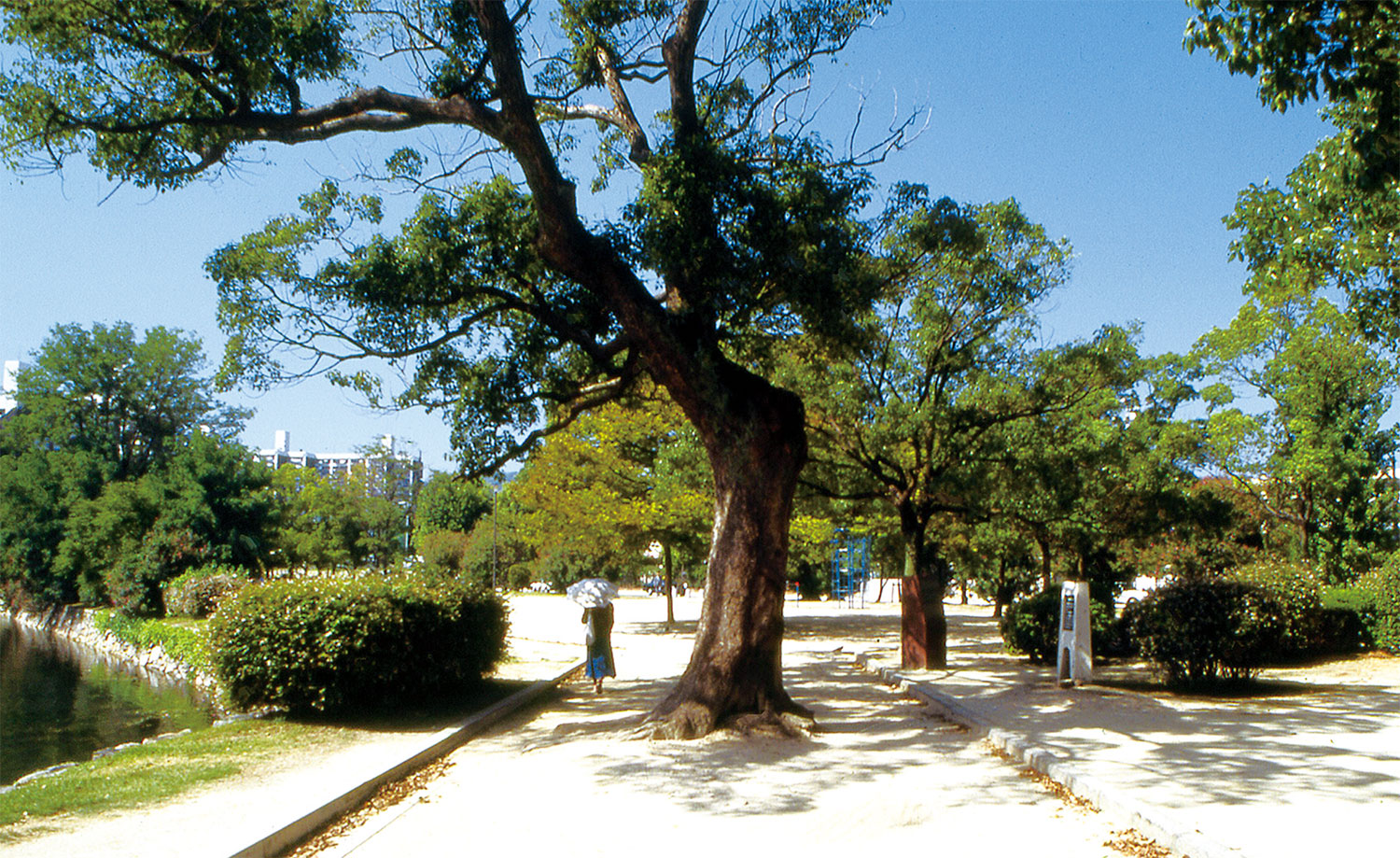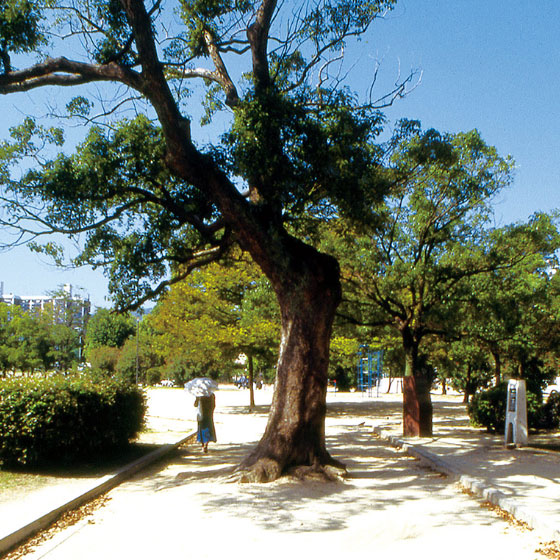At the edge of the moat facing the castle tower of Hiroshima Castle, you will find a single camphor tree. When the atomic bomb was dropped 77 years ago on August 6, 1945, the trunk, while bent in the blast winds, did not break. When the flames from the Hiroshima Military Preparatory School reached the tree, it burned, but not completely.

Now, the branches of this tree, like a fist raised to the sky, are as thick as its trunk.Until preservation work began in 1996, when it was registered as a hibaku tree, or atomic-bombed tree, in the Hiroshima City Atomic-Bombed Building Register, this tree stood in the middle of a well-used path. Over the years, the people who used this path by the moat of Hiroshima Castle unwittingly trampled the earth above the roots, compacting the soil. By 1996, it looked like the tree would not live much longer without a little help. This was a tree that had been damaged because human beings deemed it so. What could be done to ensure that this tree, that dug its roots in and endured, could live a long, healthy life with dignity? The first step was to widen the path, improve the soil conditions, and create a fence around it. Then, supports were built to help the tree stand on its own and support the weight of its heavy branches. With a little help, this tree continues to live on today. While the original trunk has hollowed, a new basal shoot has grown and is covered with brilliant green leaves. This camphor tree stands as living proof that if people stand with the trees, trust in their ability to persevere, and give them the appropriate care, they can carry these trees into the future. Help us to protect this tree and all the hibaku trees so that no harm will ever come to them again and they will never be forgotten. Hiroshima City registers trees that survived the bombing within a two-kilometer radius of the hypocenter as hibaku trees.



